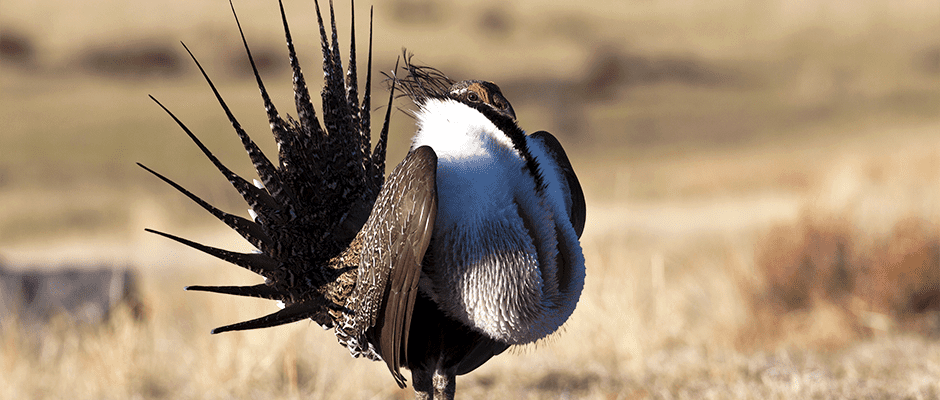Share this article
BLM unveils revisions to sage-grouse conservation plans
The Bureau of Land Management has released the final environmental impact statement and proposed plan amendments for greater sage-grouse (Centrocercus urophasianus) conservation on public land in Colorado, Idaho, Oregon, Nevada, Utah and Wyoming.
The recent revisions, which came as a result of a secretarial order from Interior Secretary Ryan Zinke last year, allow for more energy development and mineral extraction and remove restrictions from hundreds of thousands of acres of identified sage-grouse priority habitat areas.
In 2010, the U.S. Fish and Wildlife Service determined that the greater sage-grouse warranted protections under the Endangered Species Act, but over the next several years, federal agencies, states and nonprofits worked together to developed protections to conserve the species without listing it under the ESA. As a result, Interior announced in 2015 that the sage-grouse would not require listing. That year, the BLM and U.S. Forest Service also finalized their sage-grouse conservation plans.
The BLM’s 2015 plan, which covered over 70 million acres in 11 states, identified 10 million acres of “sagebrush focal areas” — habitats deemed critical to the bird’s survival — and placed restrictions on the activities that could occur in these areas. The revisions would remove the protections from most of these areas, retaining a total of 1.8 million acres of sagebrush focal areas only in Oregon and Montana.
Many changes are state-specific, such as the proposal to remove the ban on oil and gas leasing within a mile of an active lek in Colorado. The revisions would also relax the no-surface-occupancy requirements in priority habitat management areas to allow exceptions, waivers, and modifications in Idaho and Wyoming. In Nevada, the changes would permit the boundaries of priority habitat management areas and other designated habitat to be revised outside resource management plan amendment process.
According to BLM, the revisions better align BLM resource management plans with state plans for sage-grouse conservation. “We know the successful conservation of the Greater Sage-Grouse requires the shared stewardship vision of the states, private citizens, landowners and federal land management agencies, including those within the Department of the Interior,” said Deputy Interior Secretary David Bernhardt in a press release.
BLM’s revisions are expected to be finalized next year. The Forest Service is also updating its sage grouse management plans and is accepting comments on its proposed changes until Jan. 3.
Header Image: The Bureau of Land Management has proposed changes to sage-grouse conservation in several Western states. ©BLM








